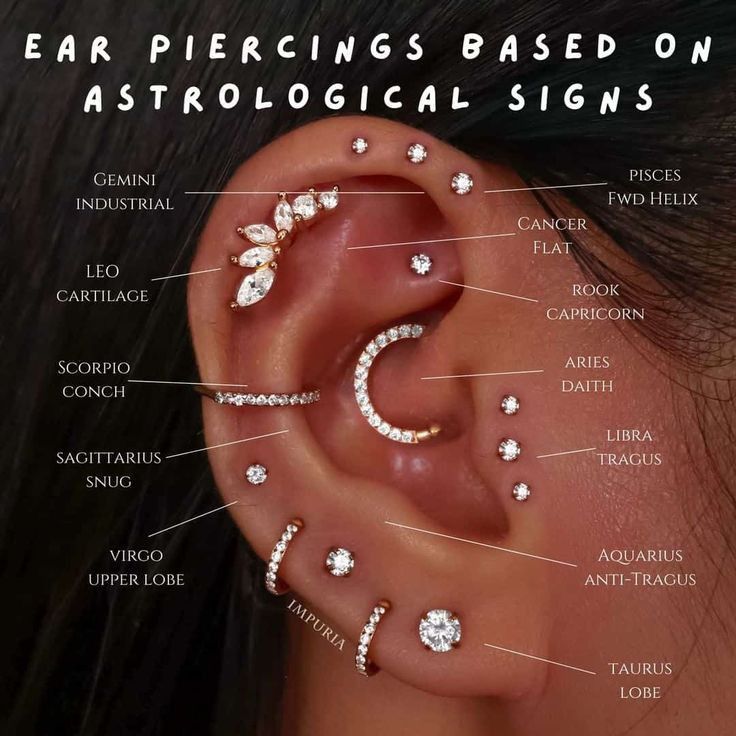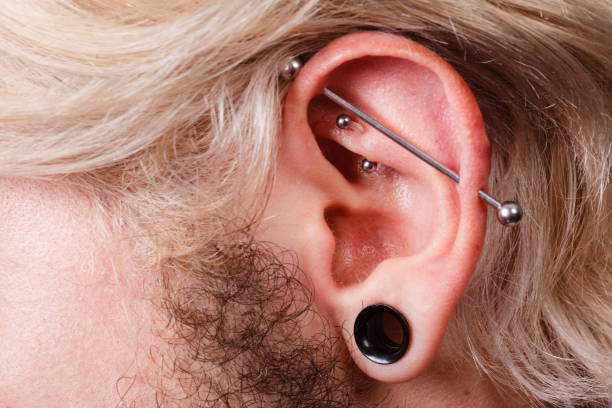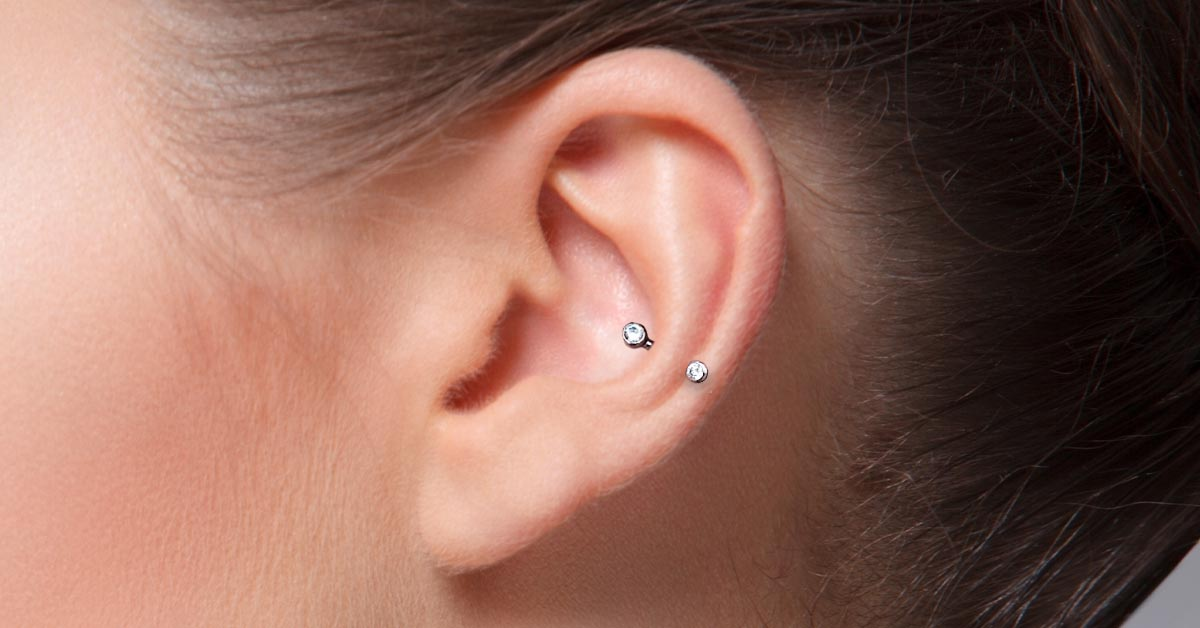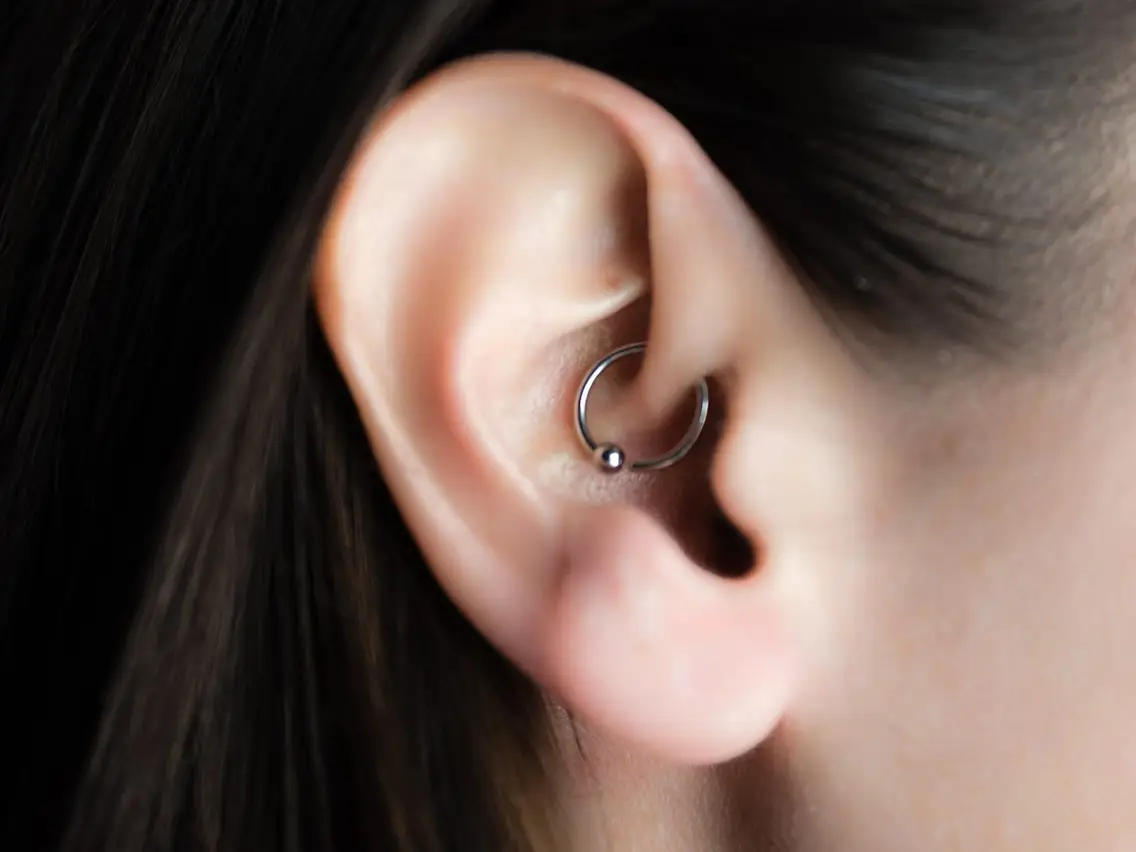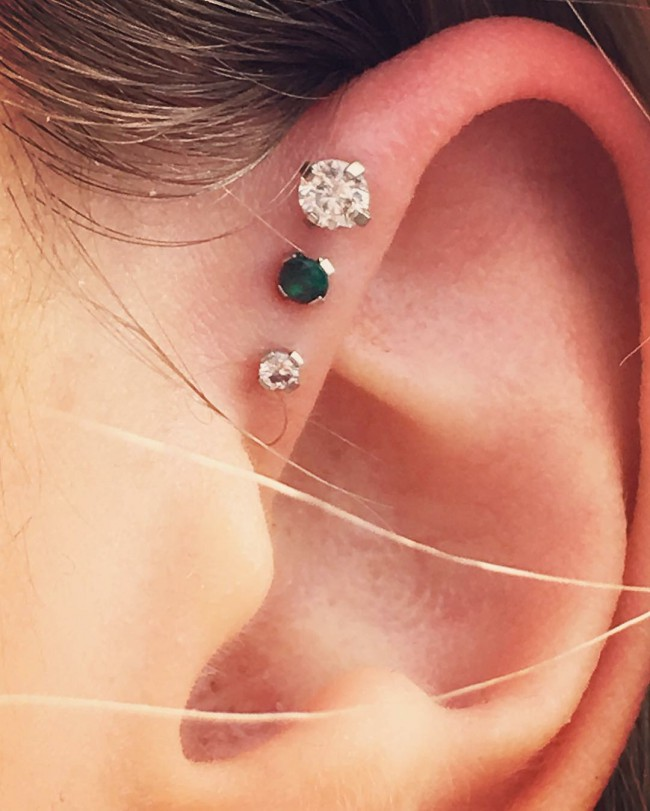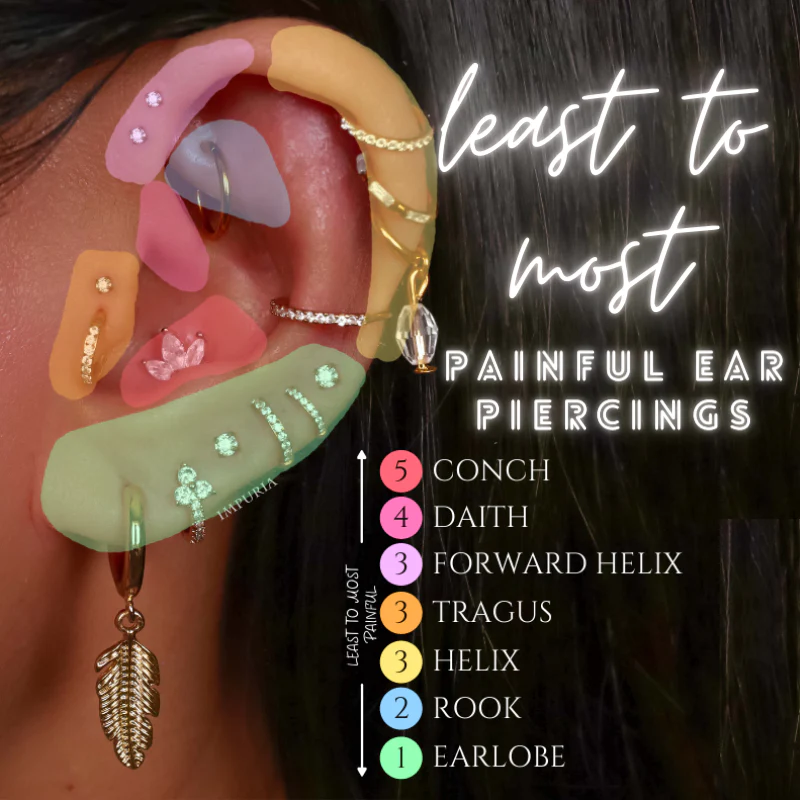Helix piercing is a common piercing among youngsters as this is one of the most stylish and worth-having piercings ever. From simple studs to statement hoops, there are countless options to choose from when it comes to helix piercing jewelry. If you’re considering getting one, let us help you know more about this gorgeous piercing so you can make the right decision in choosing the best jewelry for helix piercing.
What is Helix Piercing
A helix piercing is a type of ear piercing that is located on the upper outer rim of the ear, commonly referred to as the helix. The helix piercing is typically placed through the cartilage of the ear and can be done at various points along the rim, including the forward helix, middle helix, and upper helix. This type of piercing is popular because it allows for a wide range of jewelry styles and can be easily customized to suit the individual’s personal style preferences. Helix piercings can be done with a needle or a piercing gun, although needle piercing is generally considered to be safer and less painful. It’s important to note that like any piercing, proper aftercare is crucial to avoid infection and promote healing.

Photo from Monica Vinader
Types of Helix Piercings
Forward Helix Piercing
Placement and description: A forward helix piercing is located at the top of the ear, at the front of the helix. It is typically placed close to the head and can be done in a single or double piercing.
Pros and cons: Forward helix piercings are relatively easy to hide with longer hair, and they are less likely to get caught on clothing or hair. However, they may be more difficult to heal than other types of helix piercings due to the thickness of the cartilage in that area.
Middle Helix Piercing
Placement and description: A middle helix piercing is done in the middle of the ear, on the outer rim of the helix. It is usually done as a single piercing, but some people may choose to get multiple piercings in this area.
Pros and cons: Middle helix piercings are a great way to add a subtle touch of style to your ear without being too flashy. They are also relatively easy to heal, although they may be more prone to irritation if the jewelry is too tight or too loose.
Upper Helix Piercing
Placement and description: An upper helix piercing is located at the top of the ear, on the outer rim of the helix. It is mostly chosen as a single piercing but having more than one piercing in this area is totally fine.
Pros and cons: Upper helix piercing is more dramatic and edgy, compared to other cartilage piercing. This piercing takes more effort to take care of because of its location and the thickness of the cartilage there.

Best Jewelry for Helix Piercing
Since helix piercings are so popular among young people, there are many designs and choices of piercing when it comes to a helix. Before getting this piercing for yourself, why don’t you try to find the one for you, and don’t worry about limited choices because there are thousands of types of earring for helix piercing.
Studs: Simple studs are a classic and versatile option for a helix piercing. They come in a variety of materials, such as gold, silver, and titanium, and can be adorned with diamonds, gemstones, or pearls. Thanks to their simple, flexible design and comfort, these are the most chosen helix earrings.
Hoops: Another popular design of helix piercings are hoops. They come in a variety of materials and styles so you don’t have to think much about not finding the right one. Not gonna lie, this is probably the most comfortable helix earring.
Captive bead rings: Captive bead rings are circular pieces of jewelry with a removable bead that “captures” the ring. This jewelry gives off a pretty edgy, grunge vibe, so if you’re a fan of Alt fashion, this is the type of earring for you.
Barbells: Barbells are straight pieces of jewelry with a ball or spike on each end. They come in different lengths and materials, such as gold, silver, and stainless steel. This type of piercing is the best for people that have just pierced their ears as it’s easier to clean the piercing area with this earring.
When choosing jewelry for your helix piercing, make sure to choose high-quality materials that are hypoallergenic and suitable for your skin type. Additionally, make sure to choose jewelry that fits snugly and comfortably in your piercing to avoid irritation or discomfort.

Helix Piercing Aftercare
Proper aftercare is essential for every piercing, including the helix. Since helix piercing is located at the ear cartilage, it requires more effort. Before getting your ear pierced, it’s best to know how to take care of the piercing perfectly. If you’re struggling with this issue, here are some tips for helix aftercare.
Keep the area clean: Use a saline solution or a gentle cleanser to clean the piercing twice a day. You can make a saline solution by mixing 1/4 teaspoon of non-iodized sea salt with 8 ounces of warm distilled or bottled water. Gently clean the area with a cotton swab or pad, being careful not to twist or move the jewelry.
Avoid touching or twisting the jewelry: Frequent interaction with the piercing or the jewelry can irritate the area and slow down the healing process. Only touch the piercing when cleaning it if you don’t want to get infected or a piercing bump.
Avoid sleeping on the piercing: Sleeping on the piercing can cause irritation and healing problems. Try sleeping on your other side or using a travel pillow to keep pressure off the piercing.
Avoid swimming or submerging the piercing: Swimming pools, hot tubs, and bodies of water like lakes and oceans can harbor bacteria and irritants that can infect the piercing. Avoid submerging the piercing until it has fully healed.
Be patient: Helix piercings can take anywhere from 3 to 12 months to fully heal since this piercing is done at the ear cartilage. During this time, avoid changing the jewelry or playing with the piercing if you want it to heal completely.
If you have any difficulties with helix piercing healing time or experience redness, irritation or infection in the piercing area, we highly recommend you to meet up with professional piercers as they’re experts that know they do.

Helix piercings can be a great way to add some personality to your ear and express your individual style. However, it is important to carefully consider the type of piercing you want and to choose high-quality jewelry that will promote healing and prevent infection. With proper aftercare and attention, your helix piercing can be a beautiful and unique addition to your look

